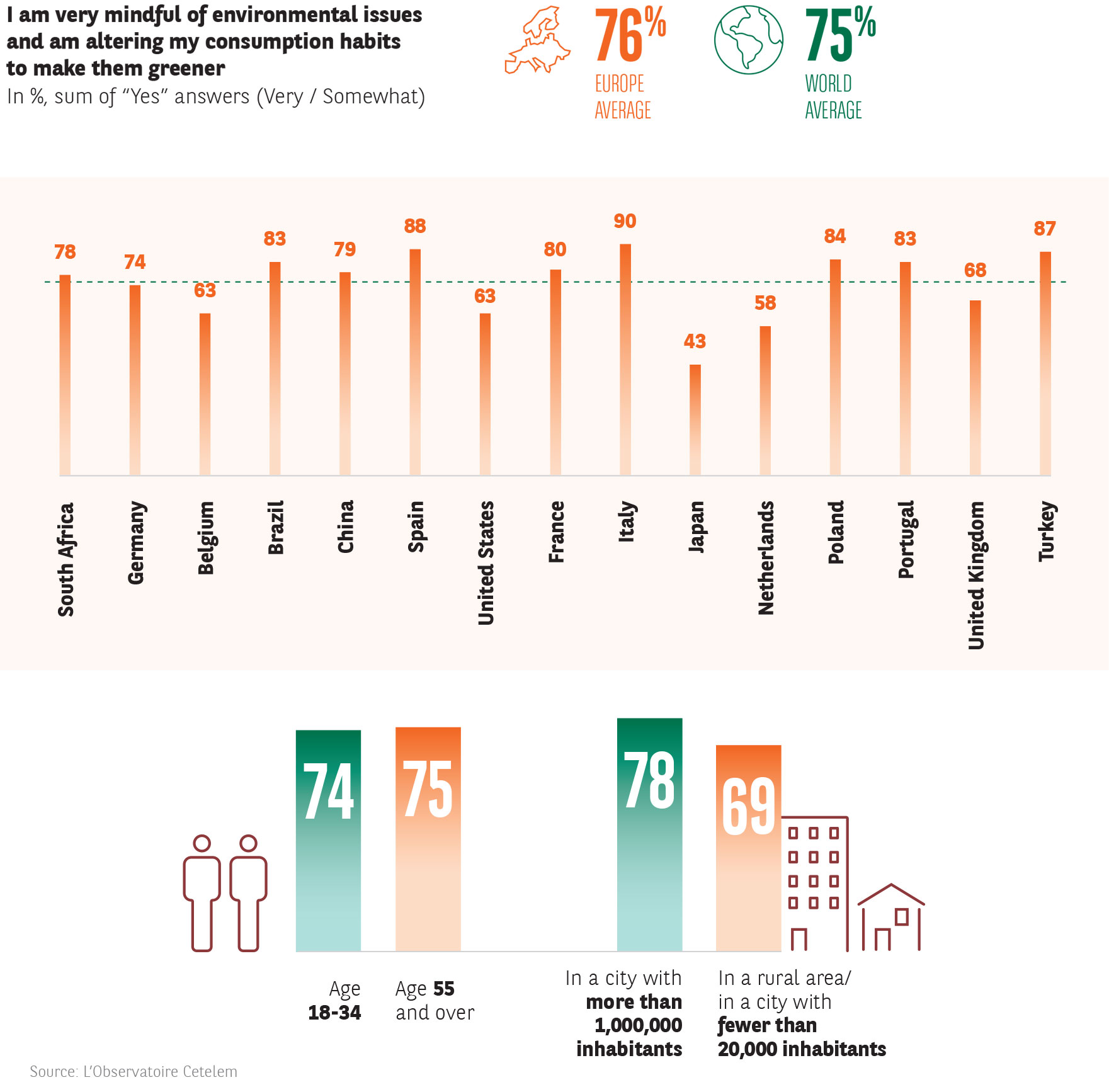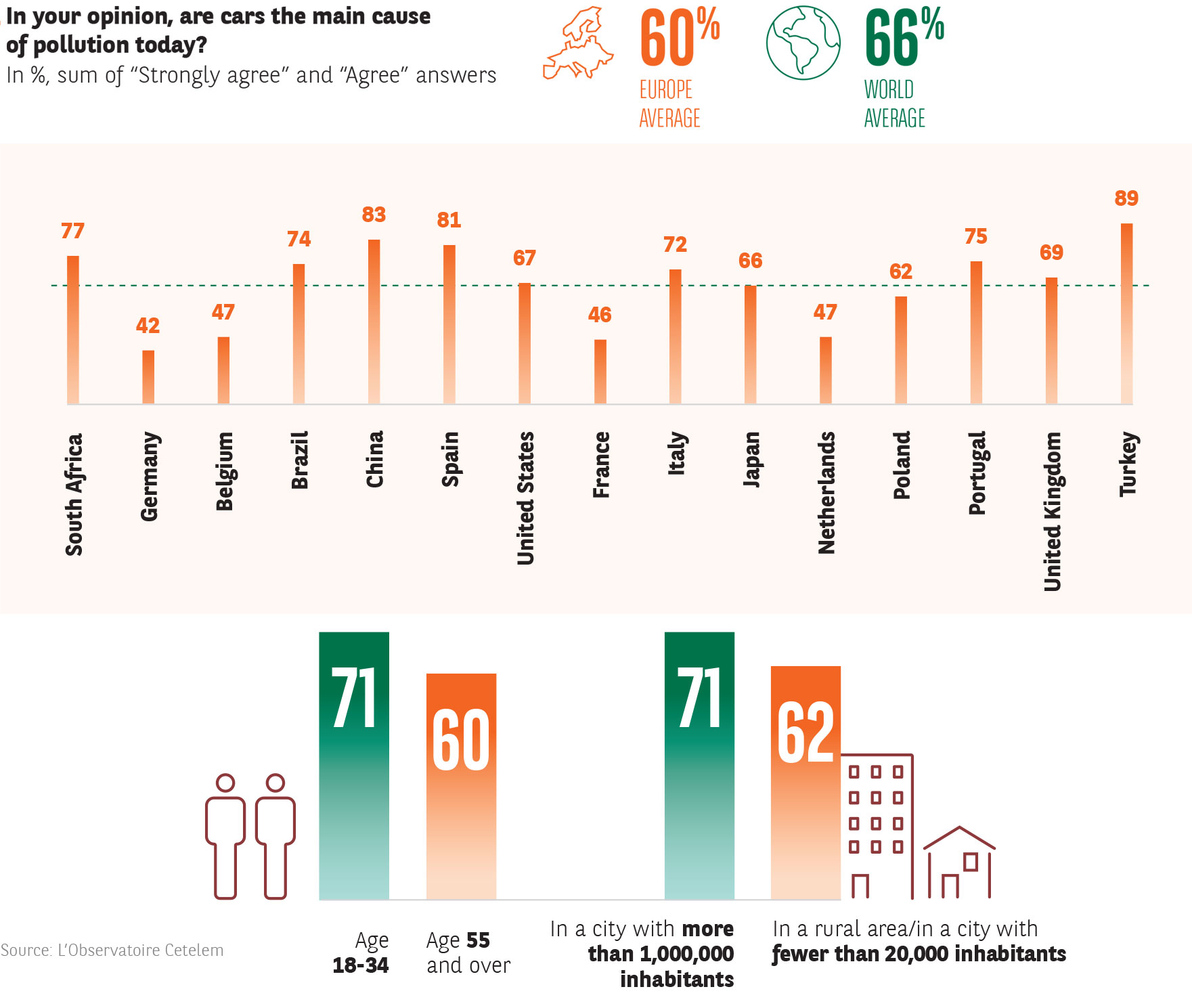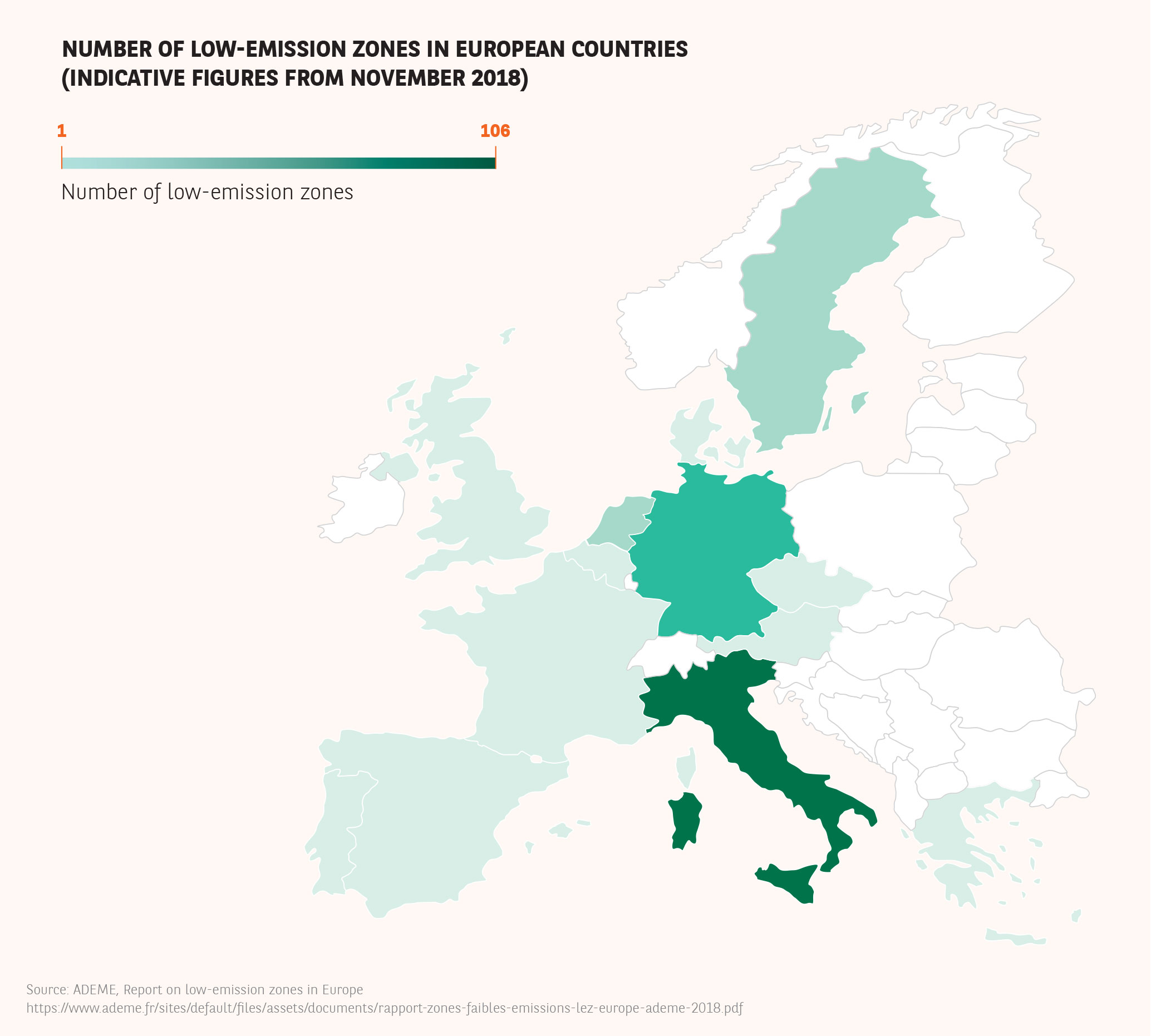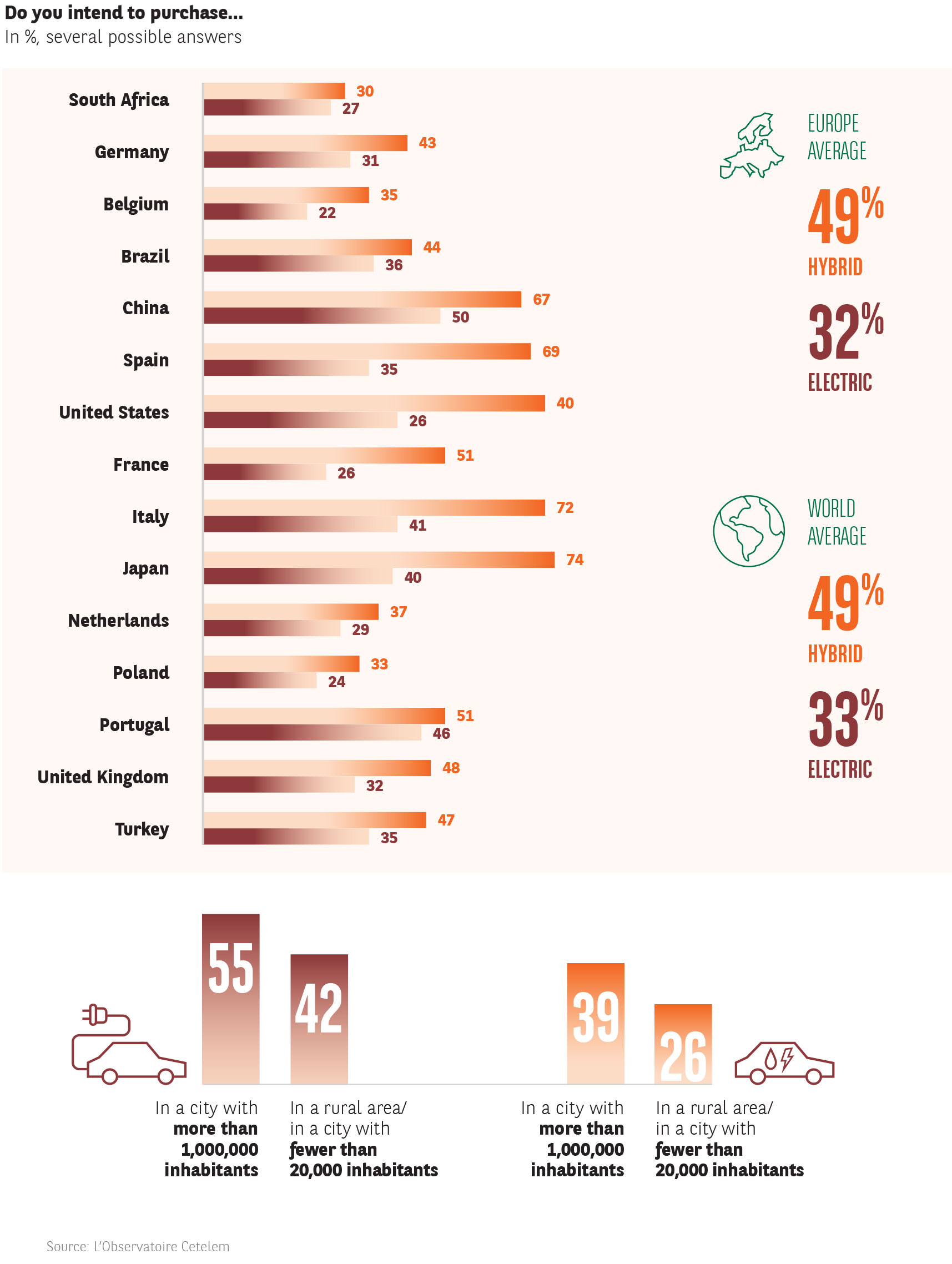Protecting the environment: rising awareness and condemnation


In the space of just a few years, environmental concerns have become an issue for everyone, not just those in the scientific sphere. The automotive sector cannot escape this reality, which has brought about very tangible changes.
A CHANGE IN ATTITUDES
Three-quarters of respondents are concerned about the environment and say that they have changed their consumption habits accordingly (Fig. 13 and 14). The Italians, Spaniards and Turks display the most concern, while the Japanese, despite having experienced various natural disasters, are the least likely to do so (44%).
While American millennials are more engaged than their elders and Chinese city dwellers more so than their rural compatriots, the differences within each country are, on the whole, not significant. The urban/rural divide is the widest, with city dwellers tending to be more mindful of making eco-friendly consumption choices.
FIG. 13 et 14 :
YOUNG PEOPLE AND URBANITES POINT THE FINGER
This newly formed environmental awareness is now leading even motorists to point to cars as being the main culprits. 66% of those surveyed consider them to be the number one source of pollution (Fig. 15 and 16).
This widespread condemnation masks clear geographical, generational and residential divides.
Turkey, China, South Africa and Brazil are unreserved in their criticism (89%, 83%, 77% and 74%). Inhabitants of the Iberian Peninsula hold equally clear-cut views. However, most of the developed economies are much less virulent (Germany 42%, France 46%, Belgium 47%, Netherlands 47%).
Vast generational differences are also apparent.
Millennials in France are twice as likely as seniors to consider cars as the leading source of pollution (63% vs. 30%). In Germany, Belgium and the Netherlands, the proportion is almost identical. There are also significant differences in South Africa and the United Kingdom. Analysing these results according to where people live again shows that Germany, France, Belgium and the Netherlands harbour the greatest divides between inhabitants of large cities, who tend to be very critical of car pollution, and their much less condemnatory rural populations.
FIG. 15 et 16 :
Measures that vary from country to country
While the climate issue seems to have taken hold in the media landscape and in the consciousness of citizens, government measures to reduce vehicle pollution vary significantly from one country to another in terms of their toughness.
GROWTH IN THE NUMBER OF LOW-EMISSION ZONES
| Mars 2011 | Mars 2012 | Mars 2014 | Mars 2015 | Septembre 2017 | Novembre 2018 | |
|---|---|---|---|---|---|---|
| Autriche | 1 | 1 | 2 | 4 | 4 | 4 |
| République tchèque | 1 | 1 | 1 | 1 | 1 | 1 |
| Danemark | 4 | 4 | 4 | 4 | 4 | 4 |
| Allemagne | 43 | 56 | 69 | 78 | 83 | 86 |
| Italie | 109 | 98 | 94 | 100 | 108 | 106 |
| Pays-Bas | 12 | 12 | 12 | 13 | 13 | 13 |
| Portugal | 0 | 1 | 1 | 1 | 1 | 1 |
| Suède | 6 | 6 | 7 | 8 | 8 | 8 |
| Royaume-Uni | 2 | 2 | 3 | 1 | 1 | 1 |
| Grèce | - | - | - | 1 | 1 | 1 |
| France | - | - | - | - | 2 | 3 |
| Belgique | - | - | - | - | 1 | 2 |
| Espagne | - | - | - | - | - | 1 |
| TOTAL | 179 | 182 | 193 | 211 | 337 | 231 |
Source : https://www.ademe.fr/sites/default/files/assets/documents/rapport-zones-faibles-emissions-lez-europe-ademe-2018.pdf
ADEME, Rapport des zones à faibles émissions en Europe
ENVIRONMENTALLY COMPATIBLE PURCHASE INTENTIONS
Car purchase intentions also reflect the behavioural changes currently taking place (Fig. 17 and 18).
While those who intend to purchase a petrol vehicle are still in the majority (59%), a rapidly increasing number of people would prefer a hybrid or even an electric model (49% and 33%, respectively). As a consequence, the dominance of diesel now seems finally over (32%).
The rise of hybrids (55%) and electric vehicles (39%) is particularly significant in urban areas. Ever-increasing travel constraints in metropolises, together with the rapid rise in the availability of new options, as a result of recent environmental standards, go some way to explaining these figures, which should increase significantly in the coming years.
Geographically speaking, “green purchasing” intentions are particularly strong in Japan, Italy, Spain and China, which favour hybrids (74%, 72%, 69% and 67% respectively).
Again we see China, along with Portugal, Italy and Japan, very much considering the electric option (50%, 46%, 41% and 40%). Conversely, it is unsurprising to see the United States clinging to petrol engines (80%), while most Turks prefer diesel (59%).
FIG. 17 et 18 :




